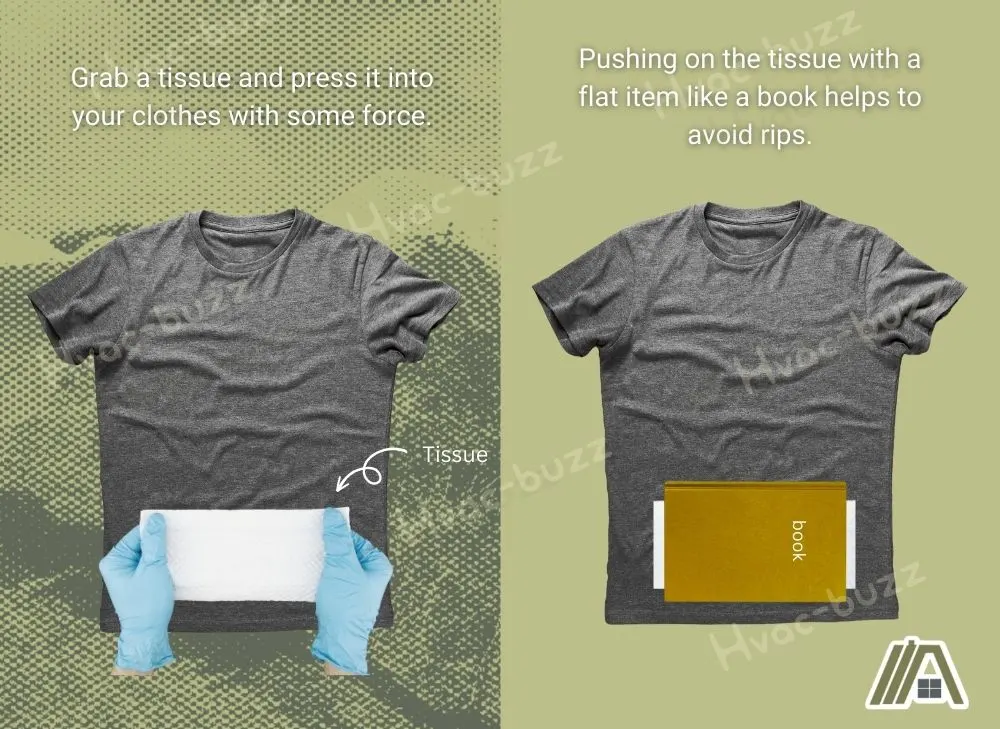Is My Washing Moisture Or Cold? (Hither’Second How To Be Sure)
I don’t know how many times I’ve stood at the clothesline or in front end of a dryer that finished ages agone and wondered if my article of clothing was wet or merely common cold. Surely these 2 sensations should be distinguishable.
When I commencement heard the reason for why we can’t figure this seemingly uncomplicated matter out, I was fascinated. And, I’ve likewise found just about skilful solutions to the problem.

Humans cannot actually detect wetness, so common cold in addition to moisture "sensations" overlap. To order if wearing apparel are wet or just common cold, the fabric tin be pressed against the cheek or lips. Pressing a tissue to the material will likewise give away if it is moisture. Heating upwardly the dryer volition besides function.
Why It Is and so Hard to Tell the Difference
It is and so difficult for humans to tell the divergence between whether something is cold or wet because we don’t take hygroreceptors, which are sensory receptors (similar to hurting as well as pressure sensors) that specifically find wet.

Instead, humans role sensory cues that help us “experience” or accomplish conclusions well-nigh whether or non nosotros are sensing wetness. Essentially, humans don’t feel H2O every bit water, but rather, wetness is perceived through a combination of low temperature, texture, and pressure.
With not having hygroreceptors, nosotros accept evolved to fox ourselves into thinking we feel something wet, when really it is but a combination of features non straight related to wetness.
When feeling something wet, it is like our encephalon is telling us, “I intend that matter is moisture” rather than a definitive, “That matter is wet.”
It has fifty-fifty been shown that when encountering substances that are wet, when touching them, in that location is less nerve action than when touch things which we do take item receptors for (textures, estrus, etc.).
So, how make we un-fob our senses? Well, in that location are a dyad of techniques that you tin endeavour.
Cheek Test
To find out if your dress are moisture or common cold, belongings them up to your cheek for a minute or so tin live helpful.
The virtually sensitive function of your body when it comes to temperature detection is your face up, alongside your cheek, lips, and nose beingness more or less of the nigh sensitive areas.
This makes feel, also, when you mean about walking around on a frigid twenty-four hours. It seems that your cheeks, nose, too lips become hitting past the common cold the hardest. Just mean nearly the parts of your confront that get reddish in the cold!
Holding the wearing apparel to your cheek rather than simply feeling alongside your hands offers the stimulus to an surface area that is much more than sensitive, too hence, meliorate equipped for making conclusions nearly wetness in addition to/or low temperature.
Holding the wearing apparel at that place for a longer duration as well helps the sensors to accept an in-depth feel for what they are inwards contact amongst.
Lip Test
The lips are roughly of the best parts of your body to differentiate betwixt cold in addition to moisture. This is because they accept over a million dissimilar nerve endings, as well as are actually 100 times more sensitive than your fingertips.
Holding apparel to your lips and so volition be really helpful inwards identifying if the clothes are moisture or just common cold.

There are likewise fewer layers of peel on your lips compared to elsewhere on your trunk, which way the nerve endings are fifty-fifty closer to the stimulus and become a ameliorate feel of what they are encountering.
When doing the cheek exam, I recommended belongings the apparel in that location for a infinitesimal more or less. When doing a lip test, you lot should live able to notice whether the dress are cold or moisture nearly straightaway, x seconds max.
This is the exam that I tend to function virtually oft.
Tissue Test
A tissue test is an most surefire manner to find out if your clothes are wet or if they are but cold.
Grab a tissue, or paper towel, and press it into your wearing apparel with some strength, just live sure non to press and then hard that yous rip the tissue.
I found that doing this exam together with pushing on the tissue with a flat detail (like a volume or folder) helps to avoid rips because the pressure level is applied more broadly.

Crumpling the tissue tin can also help avoid rips when doing the exam.
If the apparel are moisture, the tissue will absorb approximately of the wetness in addition to it will be plainly visible on the tissue. If the dress are just common cold, nigh probable in that location will be no upshot on the tissue other than a temperature change.
Warm up the Dryer
If yous are checking on wearing apparel that have been inwards the dryer for a couplet of hours since the bicycle has finished, odds are the dress are only common cold. Running the dryer for 5 minutes more or less (if you accept this option) volition assist estrus the clothes.
This will too help you to run across if the apparel were actually however wet in addition to not merely cold. If they were just common cold, so the clothes volition come out warm too alongside the same feeling texture-wise every bit when they were cooler.
If the clothes were wet, yous should observe whatsoever meaning alter in the texture of the apparel, as well as how heavy they well. Damp apparel volition be heavier than dry dress, together with the texture betwixt the 2 will too be dissimilar.
Sources
https://explorable.com/skin-senses-temperature
Comments
Post a Comment